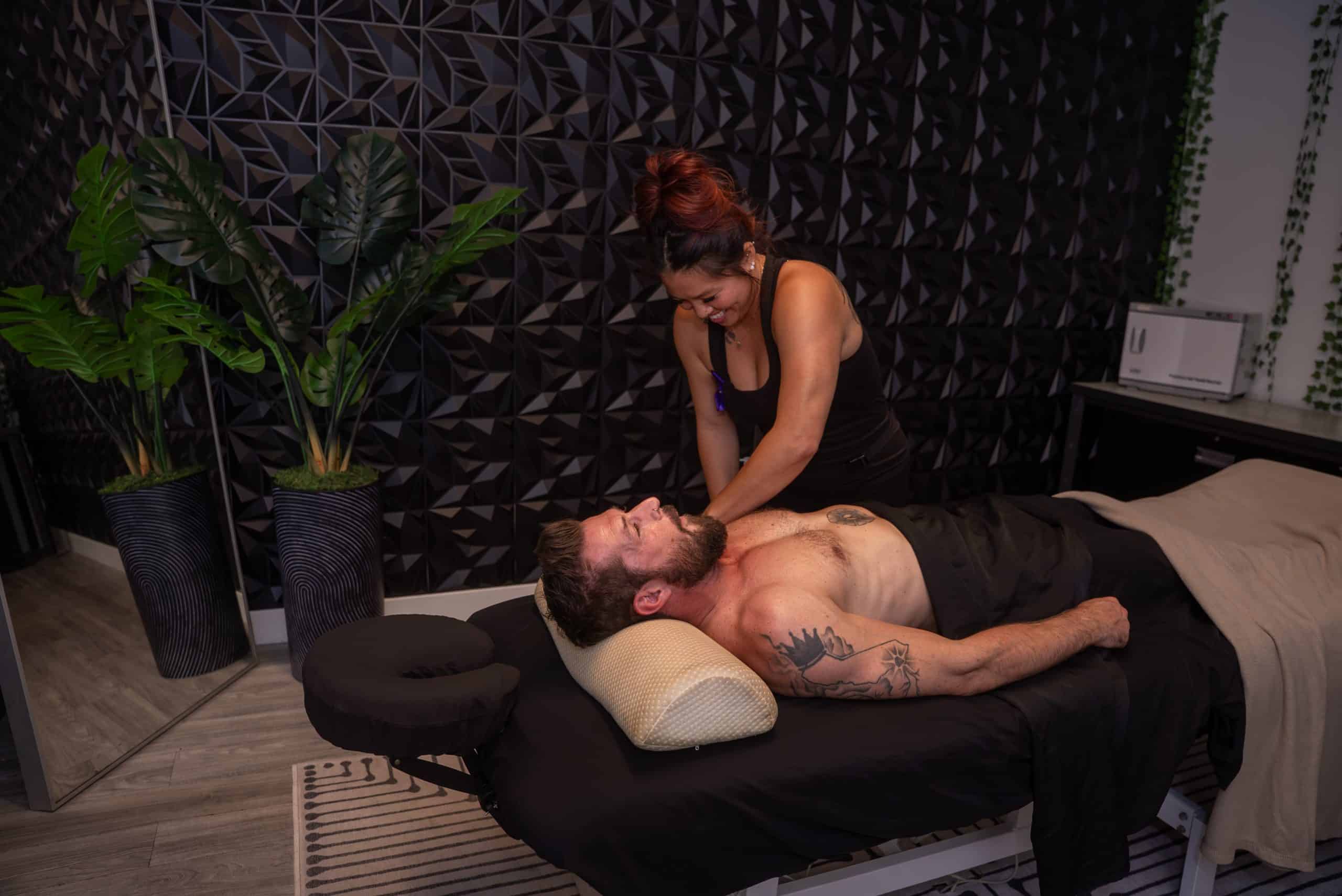Try This 20-Minute Workout for Your Legs and Butt
This lower body workout contains five equipment-free moves, each of which targets one of your body’s fundamental movement patterns. To complete the workout, perform each exercise in order for the number of reps and sets listed below.
1. Squat
Squats strengthen your quadriceps, hamstrings, glutes, core, and calves. But this move isn’t just good for building muscle — it also helps guard against injury.
Whenever you sit down, you complete a squat. And while plopping onto the couch probably isn’t too risky, squatting down to pick up a heavy object can leave you achy if you use poor form. So, practicing this motion in your workouts can help prevent unwanted injuries.
- Stand with your feet hip-width apart and toes slightly turned out.
- Engage your core and keep your chest up as you push your hips back and lower your butt down and back.
- Continue to lower yourself until your thighs are almost parallel to the floor (or however far your mobility allows). Your feet should remain flat on the ground, knees tracking over your first or second toe.
- Drive through your heels as you press yourself back up to the starting position, finishing with a butt squeeze (without pushing your hips forward).
- Complete 3 sets of 12 reps.
2. Lateral Walk
Lateral walks are great for glute growth and target your abductors (the muscles around your hips) as well. Strengthening these muscles can help increase stability in your hips, taking pressure off your lower back while you exercise or move through everyday activities.
Keep your steps slow and controlled to really engage these lower body muscles. And if you want an extra challenge, place a resistance band around your ankles.
- Stand with your feet hip-width apart. Sit into a squat position, with your feet grounded and hips pushed down and back.
- While squatting, take a wide step to the right with your right foot.
- Step your left foot toward your right until your feet are hip-width apart again.
- Take 4 steps to the right, then repeat with 4 steps to the left. That’s 1 rep.
- Complete 3 sets of 8 reps.
3. Side and Reverse Lunge
“These single-leg movements activate your stabilizing muscles, forcing your core and spine to work harder to develop balance, correct imbalances, and improve coordination and stability,” says Delgado.
Front lunges aren’t so friendly on your knee joints. Instead, stick with side or reverse lunges. Side lunges work your inner and outer thighs, training your body to move from side to side. And reverse lunges put less stress on your knees, providing more stability in the front leg.
“They are ideal for those experiencing knee problems or difficulty balancing, as well as those who have less hip mobility,” says Delgado.
- Stand with your feet shoulder-width apart and toes pointed forward.
- Step out to the right side with your right foot.
- Drop your hips down and back while keeping your left leg straight, keeping your toes pointing forward. Make sure your right knee is tracking over your right foot.
- Press through your right heel to push yourself back to a standing position.
- Take a big step backward with your right foot until both knees reach a 90-degree angle. Your back knee should hover just about the ground and your front knee shouldn’t extend beyond your toes.
- Lift your back foot and return to a standing position.
- Complete 3 sets of 5 reps (1 side lunge plus 1 reverse lunge equals 1 rep) on each leg.
4. Glute Bridge
Glute bridges strengthen your glutes and hamstrings. “This exercise can also improve core stability by targeting your abdominal muscles and the muscles in your lower back and hips,” says Delgado.
For added tension and more glute burn, place a resistance band around your thighs, or hold the top of the exercise for a few extra seconds.
- Lie on your back with knees bent and pointed toward the ceiling.
- Exhale, engage your core and glutes, and lift your butt off the floor. Keep both feet grounded on the floor and your thighs and feet parallel. Your body should form a straight line from your shoulders to your knees.
- Rest your arms with your palms facing down by your sides. Or, once you lift your lower body, clasp your hands together and extend them along the floor beneath you.
- Squeeze your glutes tightly and hold the contraction for 3 seconds.
- Release and lower your butt to the floor.
- Complete 3 sets of 10 reps.
5. Quadruped Side and Back Kick
Also known as donkey kicks, glute kicks focus on your gluteus maximus (the middle part of your glute) and gluteus minimus (the lower part of your glute).
“The side kick works particularly the quads, glutes, outer thighs, and core,” says Delgado. “The back kicks or butt kicks work the hamstrings and glute muscles, which help shape the buttocks and strengthen them.”
Imagine leading the kick motion with your knees to give your glutes a better squeeze at the top.
- Begin in a table top position, engaging your core.
- With your right knee bent, lift it out to the side until it’s parallel to the floor.
- Hold for 2 seconds, then bring it back to starting position.
- Then, keeping the right knee bent, lift it up toward the back of the room until your foot is parallel to the ceiling.
- Hold for 2 seconds, then return to the starting position.
- Perform all reps on one side before switching legs.
- Complete 3 sets of 10 reps (1 side kick and 1 back kick equals 1 rep) on each leg.









